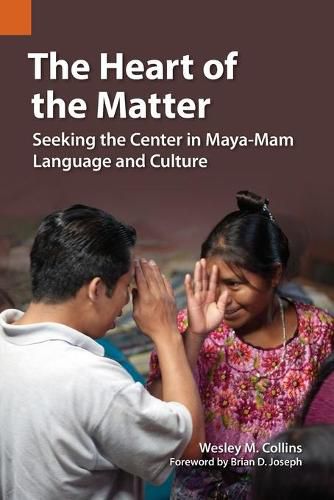Readings Newsletter
Become a Readings Member to make your shopping experience even easier.
Sign in or sign up for free!
You’re not far away from qualifying for FREE standard shipping within Australia
You’ve qualified for FREE standard shipping within Australia
The cart is loading…






This title is printed to order. This book may have been self-published. If so, we cannot guarantee the quality of the content. In the main most books will have gone through the editing process however some may not. We therefore suggest that you be aware of this before ordering this book. If in doubt check either the author or publisher’s details as we are unable to accept any returns unless they are faulty. Please contact us if you have any questions.
Can a culture have a theme that unifies seemingly unrelated practices? In this volume, Collins suggests that Maya-Mam customs as different as constructing a house, staying healthy, seeking God, disciplining children, agreeing to a contract, or just speaking the language, all originate from the same concept- a search for the center. This is far more than mere balance, long recognized as a Mayan cultural value. Rather, center space is a place of physical and metaphysical peace, acceptance, meaning, health, happiness and home. Collins also shows how cenderedness is deeply embedded in the grammar of Mam- its lexicon, morphology, syntax, and discourse structure. This relatedness of Mam culture and linguistics provides an unusually detailed contribution to the debate on linguistic relativity and the Sapir-Whorf hypothesis. Collins combines historical accounts with firsthand ethnographic and linguistic methodology to explore the concept of centeredness. Detailed accounts of his personal interaction with the Mam illustrate and enrich the book’s concepts. This volume will interest students of the relationship between language and culture generally, and specifically those interested in the study of Maya of Mexico and Guatemala. Wesley M. Collins (Ph.D., The Ohio State University), along with his family, lived and worked among the Maya-Mam people for over 30 years. He currently directs the CILTA linguistic training course in Peru. His academic interests include linguistic development of indigenous languages and Mam-language research
$9.00 standard shipping within Australia
FREE standard shipping within Australia for orders over $100.00
Express & International shipping calculated at checkout
This title is printed to order. This book may have been self-published. If so, we cannot guarantee the quality of the content. In the main most books will have gone through the editing process however some may not. We therefore suggest that you be aware of this before ordering this book. If in doubt check either the author or publisher’s details as we are unable to accept any returns unless they are faulty. Please contact us if you have any questions.
Can a culture have a theme that unifies seemingly unrelated practices? In this volume, Collins suggests that Maya-Mam customs as different as constructing a house, staying healthy, seeking God, disciplining children, agreeing to a contract, or just speaking the language, all originate from the same concept- a search for the center. This is far more than mere balance, long recognized as a Mayan cultural value. Rather, center space is a place of physical and metaphysical peace, acceptance, meaning, health, happiness and home. Collins also shows how cenderedness is deeply embedded in the grammar of Mam- its lexicon, morphology, syntax, and discourse structure. This relatedness of Mam culture and linguistics provides an unusually detailed contribution to the debate on linguistic relativity and the Sapir-Whorf hypothesis. Collins combines historical accounts with firsthand ethnographic and linguistic methodology to explore the concept of centeredness. Detailed accounts of his personal interaction with the Mam illustrate and enrich the book’s concepts. This volume will interest students of the relationship between language and culture generally, and specifically those interested in the study of Maya of Mexico and Guatemala. Wesley M. Collins (Ph.D., The Ohio State University), along with his family, lived and worked among the Maya-Mam people for over 30 years. He currently directs the CILTA linguistic training course in Peru. His academic interests include linguistic development of indigenous languages and Mam-language research